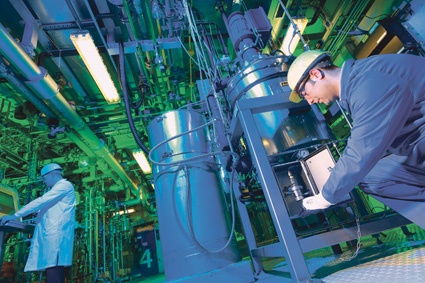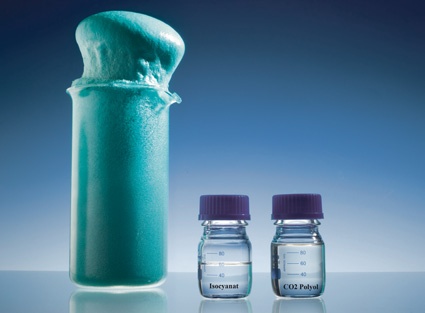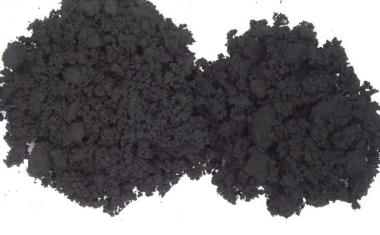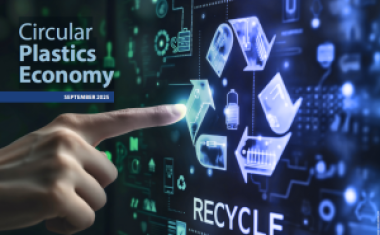Bayer’s New Chemicals Value Chain


Modern Chemical Engineering - Bayer Group is set to take a crucial step in 2013 in the realization of its plans to create a new chemicals value chain based on the conversion of CO2 into a range of intermediates using stored energy from renewable sources like wind.
At the INVITE R&D center in Leverkusen, jointly run by Bayer Techology Services (BTS), the company's engineering arm, and Dortmund Technical University, the company is in spring due to start operating a demonstration CO2-reforming reactor. The CO2 will react with hydrogen from a renewables-powered electrolysis unit to produce intermediates such as carbon monoxide and formic acid.
"We are finding ways of creating a new value chain by making use of waste CO2 from power generation and hydrogen coming from cheap energy," Professor Hans-Wilhelm Engels, research director at Bayer MaterialScience, said at a recent press conference at RWTH Aachen University, Germany.
The demonstration unit will provide a platform not only for making CO2-derived polymers and other products but also for the development of technologies for the storage of excess energy from renewables like wind and solar power.
Research and Development
Initially the company's research efforts are being focused on the optimization of a process under which surplus wind energy is used for electrolysis of water into hydrogen, which can be a means of storage. But the hydrogen can also be utilized for the hydrogenation of CO2 to formic acid which provides a much more stable form of energy storage.
Bayer is involved in a longer-term scheme for storing electrical energy from renewable sources with the aid of large zinc-air batteries, which if they can be designed to operate efficiently would be environmentally safe and relatively inexpensive with large quantities of cheap and readily available raw materials. However a major uncertainty overshadowing the use of excess renewable sources is the cost and availability of the surplus energy.
In Europe, power generators currently are obliged to buy at minimum prices guaranteed amounts of energy from wind farms and other renewable sources under the European Union mandatory targets for use of renewable electricity.
Missing Storage Technology
Today, due to the absence of economically viable storage technologies, the surplus energy produced by wind and solar power operators on windy and sunny days is lost. However once these technologies are developed it is unclear how much of the surplus energy could be made available and at what cost to companies like chemical producers with innovative storage processes.
"Hydrogen from the electrolysis program could be very cheap if there is lots of renewable energy available at a very low price," Christoph Guertler, head of the BMS catalysis programme explained. "We believe that given the right scenario with the hydrogen electrolysis process the cost of the electricity will be much lower than it is today so that the technology would be economically viable."
The CO2RRECT Project
In Germany Bayer is not alone in pursuing a new chemicals value chain based on CO2 and renewables. The development of the electrolysis process powered by wind energy is the main aim of the €18 million CO2RRECT project, mostly funded by the German Ministry of Education and Research (BMBF).
CO2RRECT (CO2-Reaction using Regenerative Energies and Catalytic Technologies) has 13 partners, headed by BTS, including BMS. The others comprise RWE Power AG, the suppliers of the CO2, Siemens, the originator of the electrolysis technology, and a number of scientific institutes.
The development of the catalytic technologies is being conducted by the CAT Catalytic Center, Aachen, an international catalysis research hub, founded in 2008 by Bayer and RWTH Aachen University with support from the German state of North-Rhine Westphalia. In September 2012, the unit secured another five years of funding from Bayer and RWTH. As a result it will continue to play a key role in the interdisciplinary research projects managed by Bayer on the use of power plant CO2 as a chemical raw material. "Without the CAT Catalytic Center, we most certainly would not have progressed so quickly in developing these projects," Guertler says.
The CO2 Feedstock
The CO2 comes from RWE's site at Niederaussem, Germany, where the carbon dioxide is first separated from flue gas and liquefied before being put into cylinders for transportation to Leverkusen.
For the production of formic acid from CO2 and hydrogen, RWTH Aachen University has been researching a concept using a two-phase reaction system in a continuous process which applies supercritical CO2 to help provide pure formic acid.
"We have been working on new ways to make formic acid for 20 years and naturally our research fits into our joint project with Bayer," Professor Walter Leitner said, chair of technical chemistry and petro chemistry at RWTH and scientific director at the CAT Catalytic Center.
Among the technologies being developed by the CAT Catalytic Center in collaboration with CO2RRECT the closest to commercialization is the catalytic conversion of CO2 into polyols for reacting with isocyanates into polyurethanes.
CO2 reacts with a zinc-based catalyst to make polyether polycarbonate polyols for the production of both rigid and soft polyurethane foam products, polyurethane coatings and thermoplastics polyurethanes (TPU).
"The zinc catalyst was known about for around 30 years," Thomas Mueller explained, head of research at the CAT Catalytic Center. "We worked on it in the lab to scale it up for pilot plant production within five years. The real success of this unit is taking things from the lab up to commercial scale feasibility."
Bayer is aiming to start large-scale production of the CO2-based polyols with the mattress market being the first to be targeted because of the flexibility of its polyurethane foams and their greater flame retardancy compared to those of conventionally produced polyurethanes.
"We want the properties of the polyurethanes with the CO2 polyols to be reasonably similar to those already on the market," Guertler said. "We want them to be 'drop-in' products so that the buyers of the polyurethanes do not have to invest in new processing equipment."
Building Blocks for Polymers?
In the longer term the objective is to use CO2 as a building block for a range of polymers. The CAT Catalytic Center is already doing research work on the creation of aliphatic as well as polyether polycarbonates and on the catalytic copolymerization of CO2and epoxides and CO2and styrene oxide. "With the right catalysts CO2 is easier to activate than expected," Guertler said. "There is more to come."
Bayer's R&D activities on the development of zinc-air batteries, which are powered by oxidizing zinc with oxygen from the air, are separate from those in catalysis innovations. Instead the research is focused on optimizing the batteries by exploiting Bayer's new oxygen depolarized cathode (ODC) technology for a more energy-efficient electrolysis membrane process for making chlorine. The ODC technology, which changes membrane electrolysis to a fuel cell concept through the feeding in of gaseous oxygen, reduces energy consumption in chlorine production by at least 30 %.
Zinc-air batteries have the advantage of a high specific energy density of 1,100 watt-hours/kg, giving them a higher capacity/volume than other types of batteries. But they have had short life cycles because of the build-up of materials on the zinc electrode and clogging of pores for the intake of air.
In a collaboration with partners in industry and academia and with funds from the German Ministry of Economics and Technology, Bayer is aiming to use ODC to sort out these problems. The company is already claiming that "a breakthrough may now have been reached" with the introduction of a "flowing electrolyte and special electrodes in conjunction with the ODC technology."
The ODC process for chlorine production which is currently being tested at a demonstration plant at Uerdingen Chempark, Germany, is already due to be marketed jointly this year with ThyssenKrupp, the engineering group which helped in its development. The zinc-air battery will take much longer to commercialize. "It will be run like a chemical plant," Professor Engels said. "Solving the few problems it has before it can be commercialized will take several years."
For Bayer in its drive to create new raw material and energy infrastructures for chemicals production, the current priority is the development of technologies and facilities for making CO2 a building block project with energy coming via the hydrogen electrolysis route.
Company
Chemical Market Reporter32 Queenborough Lane
Braintree,Ess. CM7 8QE
UK
most read

Ratcliffe: Chemical Industry in Europe at a Tipping Point
Ineos CEO Ineos calls on European politicians to save the chemical industry.

Orion Announced Plans to Shut Down Carbon Black Plants
Carbon black manufacturer Orion Engineered Carbons plans to rationalize production lines in North and South America and EMEA.

VCI Welcomes US-EU Customs Deal
The German Chemical Industry Association (VCI) welcomes the fact that Ursula von der Leyen, President of the European Commission, and US President Donald Trump have averted the danger of a trade war for the time being.

BASF Sells Majority Stake in Coatings Business
BASF sells a majority stake in its coatings business to the investor Carlyle.












